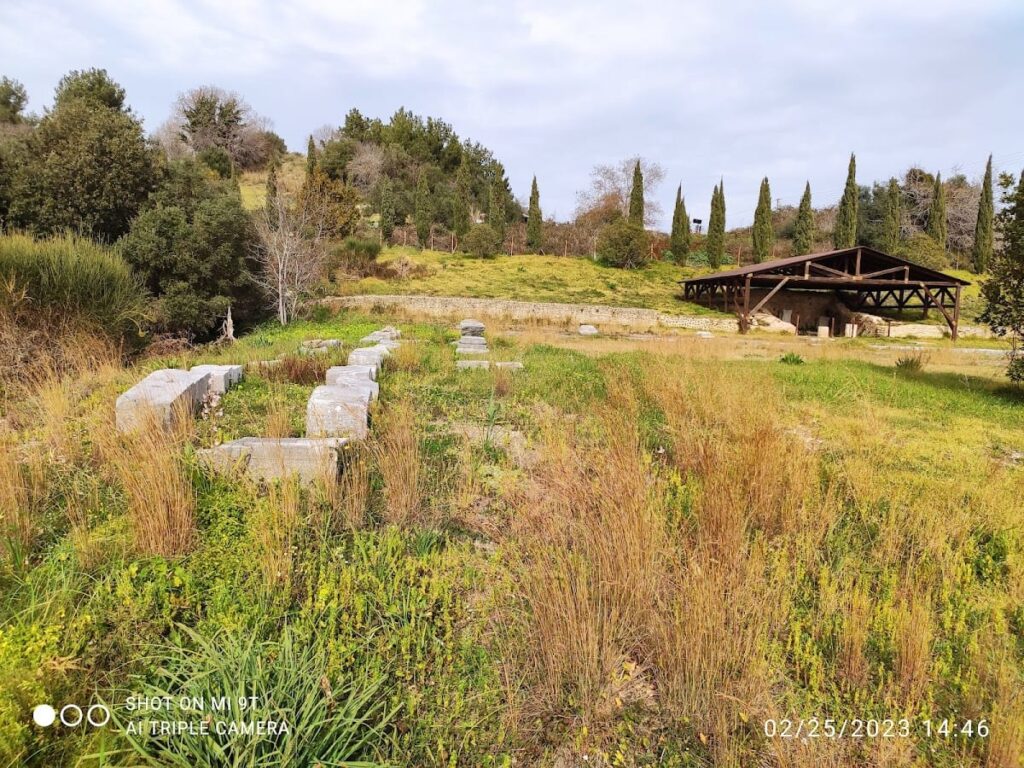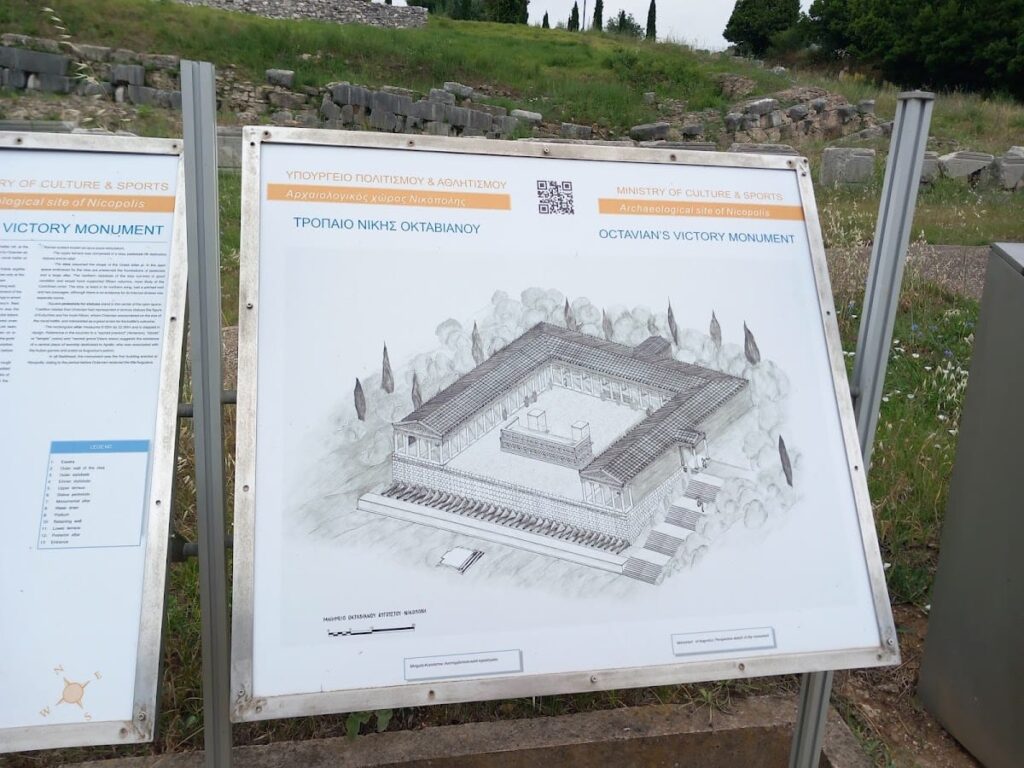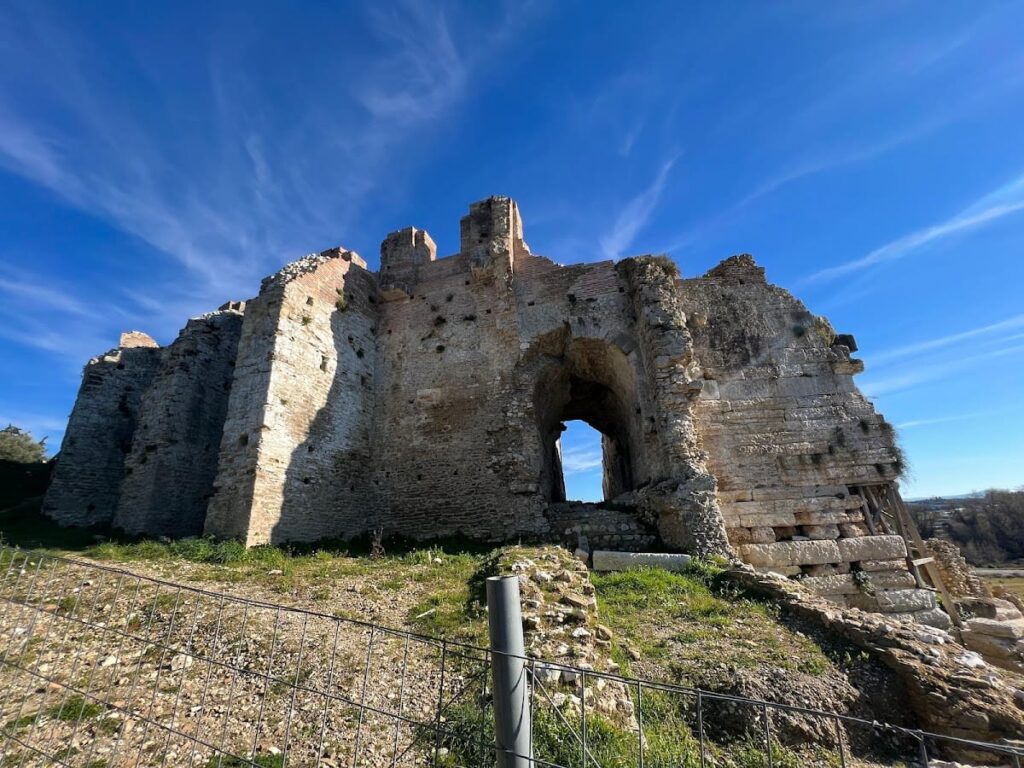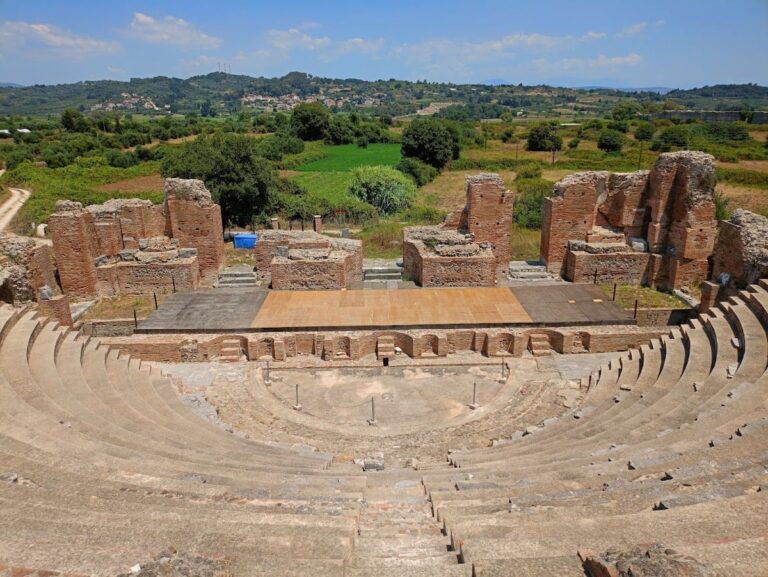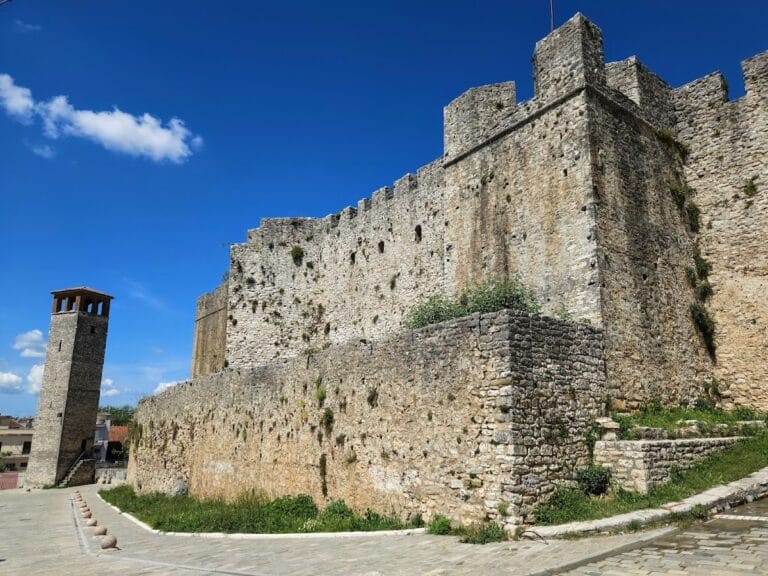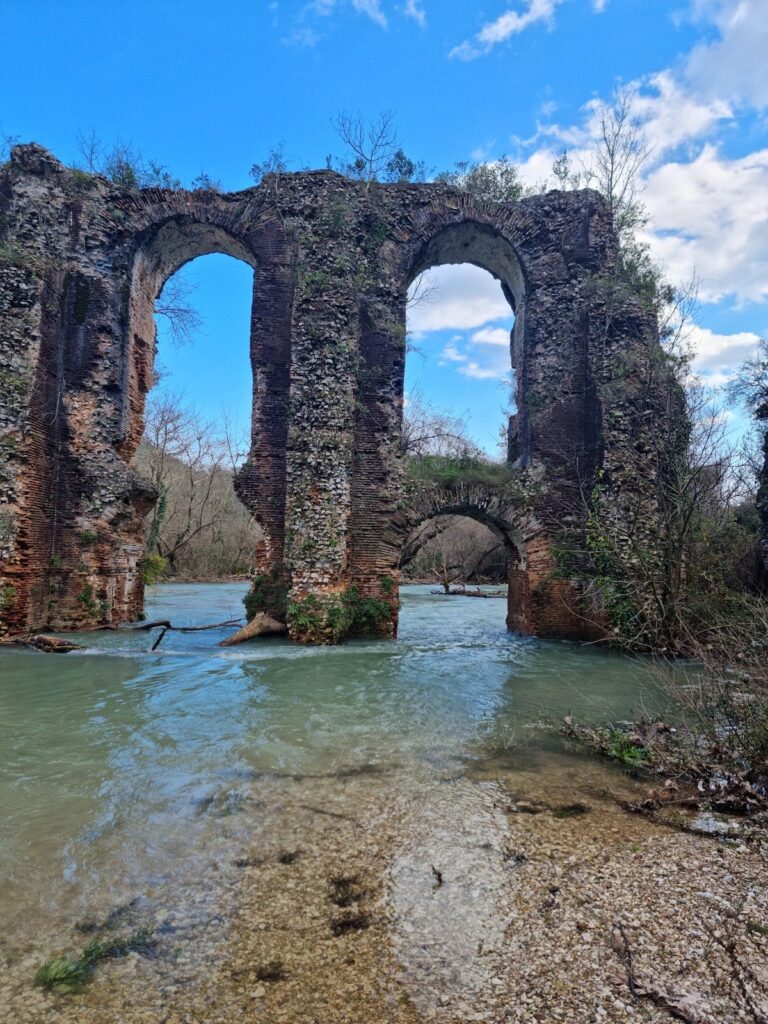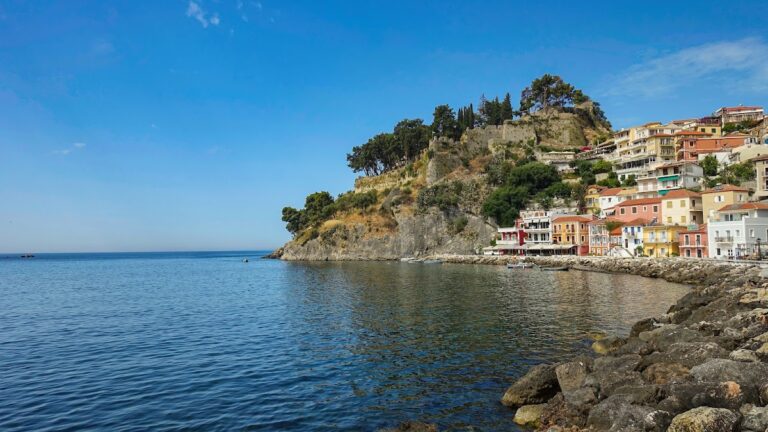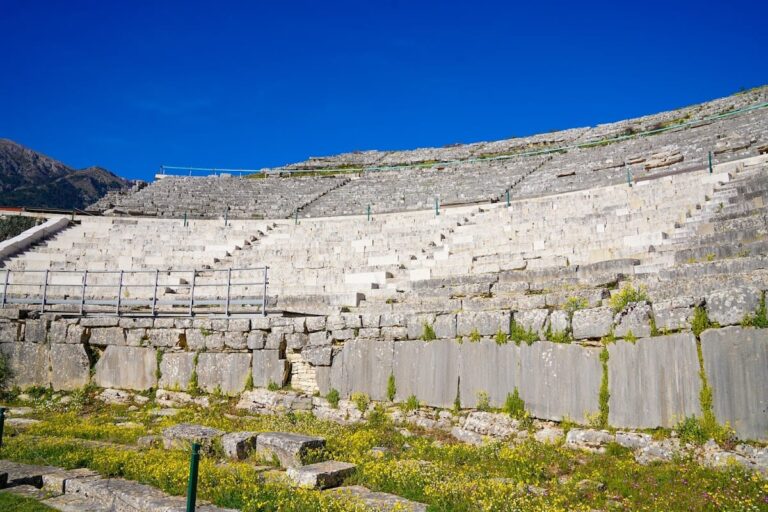Octavian Caesar Augustus Monument: A Roman Memorial near Nicopolis, Greece
Visitor Information
Google Rating: 4.3
Popularity: Low
Google Maps: View on Google Maps
Country: Greece
Civilization: Roman
Remains: Civic
History
The Octavian Caesar Augustus Monument stands just north of the ancient city of Nicopolis in western Greece. This city was founded by Augustus himself to honor his naval victory at the Battle of Actium in 31 BC. The monument was built between 29 and 27 BC by the Romans to commemorate this decisive triumph over Mark Antony and Cleopatra. The hill where it stands was sacred to Apollo, and the monument was dedicated to the gods Neptune and Mars, whom Augustus credited for his success in battle.
Ancient historians such as Dio Cassius, Suetonius, and Plutarch mention the monument briefly, confirming its dedication by Augustus under the title “Imperator Caesar, son of the divine Julius.” The inscriptions celebrate peace on both land and sea and the spoils taken from the defeated fleets. The monument served multiple purposes: it was a religious dedication, a political statement, and a commemorative site near Augustus’ military camp during the battle. It was connected to Nicopolis by a road and aligned with the city’s layout to ensure it was highly visible.
The monument remained in use for several centuries, possibly until the reign of Emperor Constantine I in the 4th century AD. Its destruction likely resulted from fire and deliberate damage caused by religious fanaticism as pagan monuments fell out of favor. Rediscovered in 1805 by W. M. Leake, the site was partially excavated in 1913 and studied further in the 1920s. Since 1974, systematic excavations and conservation efforts have uncovered inscriptions, reliefs, and architectural elements, shedding light on its historical significance.
Remains
The monument was designed as an open-air sanctuary built on two artificial terraces on the slopes of Michalitsi Hill. These terraces were supported by two retaining walls facing south. The lower wall was made using opus caementicium, a Roman concrete technique, while the upper wall consisted of limestone blocks measuring about 63 meters long and 7.3 meters high. This upper wall featured anchor-shaped sockets that once held approximately 36 bronze rams, or rostra, taken from Antony and Cleopatra’s fleet. These bronze rams were arranged by size, with the largest placed at the western end, and mounted on stone pedestals on the lower terrace.
Above the bronze rams, a long Latin inscription about 54 meters in length was carved. This dedication honored Mars and Neptune and celebrated Augustus’ victory and the peace that followed. The upper terrace contained a large square courtyard roughly 38 meters wide, surrounded on three sides by a portico with two rows of columns. The outer row was Doric, known for its simple style, while the inner row was Corinthian, noted for its ornate capitals. The south side of the courtyard was left open.
The portico walls were decorated with frescoes featuring linear and plant motifs. The roof was covered with Corinthian tiles and terracotta architectural elements, including gutters shaped with reliefs of a lioness nursing Romulus and Remus, the legendary founders of Rome. Dolphins flanked waterspouts carved as animal heads. At the center of the courtyard stood a large rectangular altar measuring about 22 by 6.5 meters. Made of sandstone, it was richly decorated with over 1,100 sculpted marble fragments depicting naval scenes, battles with Amazons, weapons, trophies, and a triumphal procession emphasizing Augustus’ military success and divine right to rule.
Two square pedestals flanked the altar to the north. One may have supported a bronze statue group representing the donkey Nikon and his driver Eutychos, an omen linked to Augustus on the day of the battle. Around the courtyard, about thirty small perforated vases were found, suggesting the presence of a sacred garden dedicated to Apollo, Augustus’ patron god. In the 1st century AD, a rectangular addition was built on the north side of the portico, likely serving as an imperial cult shrine known as an Aedes Augustalium.
The monument’s layout and orientation were carefully planned to dominate the surrounding landscape, face the naval battlefield, and integrate with other nearby commemorative sites such as the Temple of Apollo Aktios. Today, the remains include the retaining walls, the altar base, column foundations, and fragments of the bronze rams and inscriptions.


